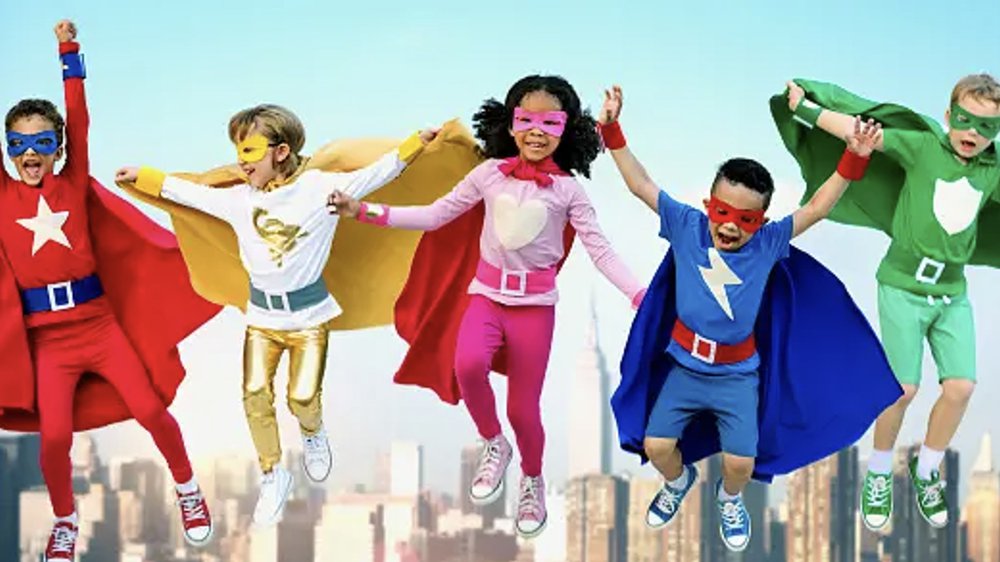"Education is not the filling of a pail, but the lighting of a fire."
--William Butler Yeats
In education, almost everything changes.
Almost.
Technology changes. 30,000 years ago, the height of technology was painting on cave walls near the village of Montignac in southwest France. It was sophisticated and, long-lasting. 3,000 years ago, papyrus made communication portable and more easily shared, and that technology allowed the spread of knowledge from the Egyptians and Greeks to the known world (at least the world known by the Egyptians and Greeks). Around 1440, Johan Gutenberg started the printing revolution with a movable-type press, increasing a hundred-fold the speed of producing printed matter. In 1774, Georges Louis Lesage patented the electric telegraph, and the restriction of geography was lifted from communication. 30 plus years ago, Tim Berners-Lee invented the World Wide Web while working at CERN. And seven months ago, all the world heralded the birth of generative AI.
Yet, in these 30,000 years, one thing has barely changed. In education, the responsibility has fallen upon a “teacher” as the primary facilitator of knowledge transference. It may have been a tribal elder, a parent, a scholar, or a trained teacher in a now-familiar school classroom, but teaching has been seen as the primary catalyst for learning.
But as Dylan said 50 years ago, “The times, they are a changin’.”
Students possess a wealth of untapped potential that has been, for the most part, overlooked and underutilized. But by taking the steps necessary to empower students as the primary agents in their own learning scenarios, we can build a more effective educational experience. The goal is to create an environment where students learn, and where they learn to love to learn.
Ask yourself the following questions:
What if every student came to the classroom prepared to learn?
What if the achievement gap for economically disadvantaged students, students with learning disabilities and English language learners (ELLs) could be forever minimized?
What if behavioral issues were to diminish?
What if every student could take more responsibility for his or her own learning?
What if stress on learners was significantly decreased?
Passive to Active Learning
When books became ubiquitous, reading became a skill needed by virtually everyone and the need to educate masses rather than an elite few led to models inspired by the industrial revolution and mass production. These models have promoted a culture where students are passive recipients of information. The (still) predominant whole group learning approach leaves little room for students to engage, question and explore their own ideas. This passive learning limits students' ability to develop critical thinking skills, creativity, and problem-solving abilities. By reducing the student's role to that of a passive recipient, education fails to engage the student at any significant level, or to leverage their unique perspectives, insights, and diverse experiences.
Children possess an inherent curiosity and a natural desire to explore and discover. However, this curiosity is often stifled by rigid curricula and standardized testing that tend to prioritize memorization over genuine learning. By encouraging student-led inquiry, we can ignite their innate curiosities, enabling them to take ownership of their educational journeys. This shift in approach fosters a sense of autonomy and empowers students to actively drive their own learning experiences, using innate (although often underdeveloped) learning abilities to empower learning.
Every learner has learning abilities, also known as cognitive abilities or cognitive skills, that he or she was born with. These cognitive skills include many different mental processes that are important in learning. Some of the most important include attention, visual processing, auditory processing, sensory integration, memory skills, executive functions, logic and reasoning, and higher-order executive functions, such as planning and collaboration.
Cognitive training (which is sometimes called brain training) involves activities designed specifically to strengthen one or more cognitive skills. Some cognitive training programs focus on individual cognitive skills, while more effective programs are comprehensive and integrated, focusing on a variety of cognitive skills at one time. They may be computer-based or use paper-and-pencil activities or a variety of other approaches. The most common reason for children to be in a cognitive training program is to improve their capacities to learn.
Welcome Diversity
Students are a rich source of diversity, each bringing unique experiences, backgrounds, and perspectives to the classroom. By tapping into this diversity, educators can create a collaborative learning environment that celebrates and leverages the strengths of each student. Encouraging students to share their insights, ask questions, and engage in respectful discussions and debates enhances the overall learning experience for the entire classroom community. This inclusive approach not only broadens perspectives but also cultivates empathy and understanding among students, preparing them to thrive in the diverse and interconnected world in which they live.
Cultivate Critical Thinking
Critical thinking and problem-solving skills are vital in navigating the complexities of the modern world. However, these skills are often underdeveloped in traditional education settings. By actively involving students in the learning process, educators can create opportunities for them to analyze, evaluate, and apply their knowledge in real-world contexts. Through projects, discussions and hands-on activities, students can develop their critical thinking and problem-solving abilities, preparing them to solve authentic problems while still in the classroom, and for the challenges they will encounter beyond the classroom as well.
Better teaching, better facilities, better curriculum and better technology are all very important, but those are external factors. Even more important are the internal capabilities that each student brings to the table. And by utilizing what we have learned in neuroscience, we can impact the efficiency and effectiveness of the learning process by helping to improve each individual’s underlying cognitive capacity – changing the experience of learning from the inside out.
One of the things we know from science is that the brain is plastic, which means it constantly changes, building new pathways and connections. We also know that every brain is unique. What one student can do or understand easily might elude another. Neuroscience helps explain why that is and what to do about it. Science no longer accepts that intelligence is fixed, and it continues to document the critical roles that cognitive training and experience play in developing intellectual ability. In fact, cognitive skills account for a full 50 percent of the variance in students’ academic performance. That means that half the difference between one child’s academic performance and the child sitting next to him is predicated on his cognitive skills. Not teacher skill. Not class size. Not curriculum. Not even technology.
Yet, despite the fact that underlying cognitive skills are essential to learning, the development of these skills is not taught in most schools of education. It is as if we assume that every student brings the necessary cognitive skills to the learning process, or as much of those skills as he or she will ever have. But the fact that cognitive skills development has not traditionally been taught in schools does not mean that it never will be. For over half a century, techniques to develop basic cognitive skills have been known and used in various clinical therapies and settings. Today, these techniques can easily be delivered via computer-based programs to classrooms, making the delivery of cognitive training programs viable to all students.
Get Them Engaged
The reason to engage students with meaningful and relevant curriculum and real-world problems and projects is not simply because it makes learning a lot more interesting and fun, but because student engagement results in learning. Higher levels of engagement and the ability to apply what is learned in the real-world result in better learning, learning that sticks around when the test is over. Developing problem-solving ability, communication skills and creativity is fundamentally about developing the brain and its processing ability in each individual student. This is true for critical thinking and other prized 21st century skills. And while there is a consensus regarding the importance of these skills, there is still a lack of knowledge in schools about how to help students develop and measure them. However, as we move away from measuring learned content and toward the effectiveness of mental processes, neuroscience will become increasingly important.
Foster Creativity and Innovation
Creativity allows us to approach challenges from new angles, find innovative solutions, and unlock our full potential as learners. Unfortunately, most educational systems prioritize conformity over creativity. But by encouraging the imaginative capacities of students, educators can create an environment that nurtures and celebrates creativity. Providing opportunities for students to explore their passions, engage in open-ended projects and think outside the proverbial box promotes a culture of innovation, propelling education forward. In addition, enhanced cognitive capacity also promotes self-confidence and self-esteem, and does wonders in alleviating stress – not only in the learner but in the teacher and in the parents. Rather than dreading school, a self-confident learner looks forward to learning, and that is reflected in a new sense of happiness and enthusiasm in the home as well as the classroom.
Research also shows us that discipline problems are markedly lower among these students. Confident, curious learners have no need to act out, diverting the classroom’s attention from their fear of learning. Instead, their newfound abilities enable them to participate and experience the satisfaction of accomplishing difficulty tasks that keep them moving ahead. There is incredible upside potential in enabling students as leaders in the learning process. If we can unlock their creativity, critical thinking, problem-solving skills, and diverse perspectives, then they can create a future where education is not just a transmission of knowledge but a catalyst for personal growth and societal progress. Because frankly, we have come to a bit of an impasse. And we’re betting on our students to take the reins and move us forward.
About the authors

Betsy Hill is President of BrainWare Learning Company, a company that builds learning capacity through the practical application of neuroscience. She is an experienced educator and has studied the connection between neuroscience and education with Dr. Patricia Wolfe (author of Brain Matters) and other experts. She is a former chair of the board of trustees at Chicago State University and teaches strategic thinking in the MBA program at Lake Forest Graduate School of Management where she received a Contribution to Learning Excellence Award. She received a Nepris Trailblazer Award for sharing her knowledge, skills and passion for the neuroscience of learning in classrooms around the country. She holds a Master of Arts in Teaching and an MBA from Northwestern University. Betsy is co-author of the new book, “Your Child Learns Differently, Now What?”

Roger Stark is Co-founder and CEO of the BrainWare Learning Company. Over the past decade, he championed efforts to bring the science of learning, comprehensive cognitive literacy skills training and cognitive assessment, within reach of every person, and it all started with one very basic question: What do we know about the brain? From that initial question, Roger Stark pioneered the effort to build an effective and affordable cognitive literacy skills training tool, based on over 50 years of trial and error through clinical collaboration. He also led the team that developed BrainWare SAFARI, which has become the most researched comprehensive, integrated cognitive literacy training tool delivered online anywhere in the world. For more, follow BrainWare Learning on Twitter @BrainWareSafari. Roger is co-author of the new book, “Your Child Learns Differently, Now What?”











